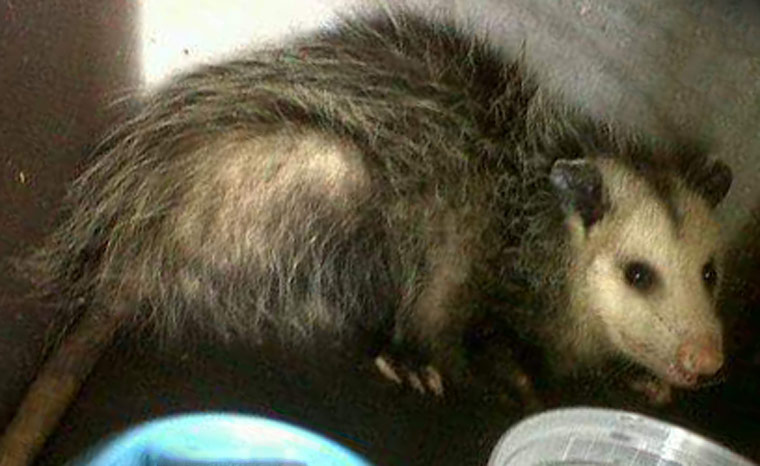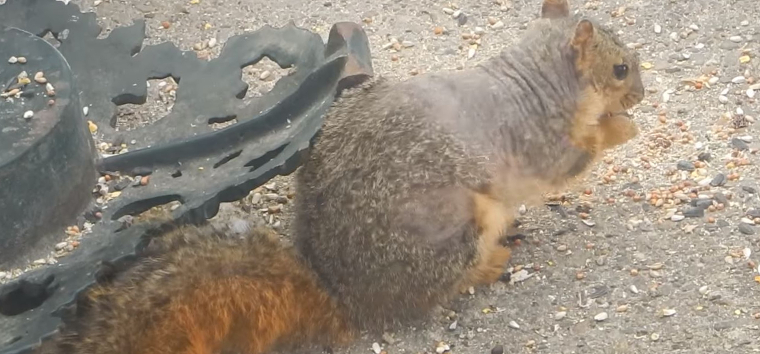-
info@aaanimalcontrol.com
Call us for help in your town
Humane Wildlife Education
The symptoms of a sick wild animal
Need wildlife removal in your hometown? We service over 500 USA locations! Click here to hire us in your town and check prices - updated for year 2020.
Wild sick animals will display a wide range of symptoms, but it will, of course, depend on what kind of disease the animal has become infected with. There are certain diseases, such as rabies, that can lie dormant within the animal for some time before any symptoms start to materialize, and this is what can make them so dangerous. You might approach a wild animal, such as a raccoon, thinking that it is perfectly safe to do so, when it is not.

Raccoons are just one wild animal that you'll encounter in urban areas, and these are well known to carry disease. The threat is present, not only with the animal itself — coming into direct contact, for example, but also with anything the animal directly touches. This could be in the form of urine, often carried around on paws, and also feces. It could also be the form of contaminated nesting and bedding material. Essentially, wherever the animal has been, the disease threat will be left behind. It makes life quite difficult when it comes to cleaning up after them.
Some wild sick animals will display obvious symptoms. They may look very lethargic, and maybe even displaying signs of a physical injury. In cases of a physical injury, it is usually quite obvious what's going on. With an internal disease, however, you never know what's going on. A nocturnal creature out during the day could be a sign that the animal is sick, but it also could be a sign that the animal has found a really good source of food. If it is tempting enough, any wild critter could be awoken from their daytime slumber.
An angry animal isn't always a good indication you have found yourself a sick or infected animal either. All animals have the potential to act aggressive, and almost all of them will if they find themselves cornered. Female wild animals are well known to be overly aggressive when protecting their young. Once again, the stigma that is often attached with sick wild animals doesn't apply.
The fact of the matter is this; all wild animals could be sick. Even if they don't look sick, they could still be sick. Even if they look perfectly healthy, they could still be sick. They could be carrying any number of infections and viruses, all of which have the potential to be passed on to you, your family members, and also your pets. Most disease have a period of time after initial infection, before the symptoms arise. During this time, these infected animals could be especially dangerous. If they don't look sick you will be more inclined to go near them, perhaps even feeding them. This feeding action is a sure fire way of putting yourself in danger. Most animal-human incidences occur when the human is trying to feed the animal.
In order to protect yourself you should stay well clear of wild animal, no matter how sick or healthy they might look. That perfectly healthy raccoon that you feed in the back garden could very well have been infected with rabies. That means you could very well be infected with rabies. It just takes one moment — one bite, scratch, or connection with infected material is all it takes. Don't be the next victim.
How Do Sick Squirrels Behave?
Need squirrel removal in your hometown? We service over 500 USA locations! Click here to hire us in your town and check prices- updated for year 2020.
The kind of symptoms that a squirrel (or other wild animal) will display when it is sick will very much depend on the condition it is suffering from. This works much the same way as any disease, across any species of animal; if a human has a cold, the symptoms will include a headache, runny nose, and perhaps a cough. If the human has something more serious, such as pneumonia, the symptoms can escalate to dizziness, a high temperature, a painful and never-ending cough, and more.

Only a professional will be able to diagnose a medical condition in an animal, although, you can spot some symptoms just by looking for yourself. You might notice that the squirrel has gunk or discharge coming from areas such as the nose, mouth, ears, or eyes. Coughing and shivering are clear signs that something is afoot, and these can come hand-in-hand with wheezing or perhaps even sneezing.
An upset stomach might be the symptom with some squirrel diseases, but you will only recognize this if you get close enough to check out the feces of the animal; an unpleasant and ill-advised task.
Of course, some squirrels can look perfectly fine even when they are sick. It is rare for squirrels to carry and transmit the rabies virus, for example, but this is not to say that it can't happen. All small mammals have the potential to both carry and transmit the disease, and that means passing it along to not just other squirrels, but other wild animals and sometimes humans too.
Just because the chances are slim doesn't mean that the situation won't happen.
Some diseases can have periods where the virus or bacteria can easily be passed along to another hose without the original disease-bearing animal even realizing that it is sick at all. Rabies is a condition just like that — the virus can lie dormant in any body for a period of time (weeks or months) before any symptoms start to show at all. When those earliest symptoms do start to show, they are vague and often associated with other conditions, such as a common cold or the flu at first.
In almost all cases, unless the animal is so sick that it can't run away from you, you won't have a clue that it is suffering from a medical condition that you could and might potentially get. You shouldn't get too close to any wild animal. You just can't be sure whether or not they are carrying a potentially deadly disease that you could then introduce into your household.
For more information, you may want to click on one of these guides that I wrote:
How much does squirrel removal cost? - get the lowdown on prices.
How to get rid of squirrels - my main squirrel removal info guide.
Example squirrel trapping photographs - get do-it-yourself ideas.
Squirrel job blog - learn from great examples of squirrel jobs I've done.
Squirrels in the attic - what to do to solve the problem.
For more information, you may want to click on one of these guides that I wrote:
How To Guide: Who should I hire? - What questions to ask, to look for, who NOT to hire.
How To Guide: do it yourself! - Advice on saving money by doing wildlife removal yourself.
Guide: How much does wildlife removal cost? - Analysis of wildlife control prices.
animals in the attic
noises in the attic


















